Myanmar is a country that’s always fascinated and intrigued me.
But when I travelled solo around Southeast Asia back in 2006, the country was still very much off limits to tourists. In fact it was ruled by an oppressive military junta from 1962 right through to 2011, and only officially re-opened its doors to tourism as recently as 2012.
There are still parts of the country that the FCO advise against all but essential travel to (large parts of the Rakhine State, the northern Shan State, and the Kachin State), especially in light of the recent Rohingya crisis. However the majority of the country remains a generally safe place to travel, and I certainly didn’t encounter any conflict or feel at all unsafe when I visited in December 2016. Just make sure you check the government’s current foreign travel advice before booking your trip.
For me Myanmar had all the appeal of a lesser-developed tourist destination, but without the language barriers and poor quality tourist infrastructure that I was expecting prior to my visit. Public transport is both accessible and reliable, wifi works well in the majority of built-up areas, and accommodation is a lot nicer than many write-ups on the internet will have you believe.
In short, it’s a fascinating, diverse, and magical country that I’m so pleased I was able to experience before the rest of the world does. And if you’d like to do the same, here is my (just shy of) two-week Myanmar itinerary. Hopefully it will help you to plan your own trip.
Day 1 – Fly Bangkok to Yangon
We booked our flights through Skyscanner (if you haven’t already got the app, you can download it here) with Air Asia for a cost of £23 each. We arrived into Yangon at 21:10 and headed straight to our fantastic little hostel on 14th Street (yes all the roads here are numbered, not named) in downtown Yangon.
Days 2 and 3 – Yangon
Although Yangon is no longer Myanmar’s capital city, it’s one that’s built on a massive scale, so finding your way around can be confusing and overwhelming, but also exciting and exhilarating. The heat in Yangon is also ridiculously oppressive. It’s a busy, smelly, and noisy city, and the traffic is crazy.
But on the flip side it’s home to some of Southeast Asia’s most impressive colonial architecture, it’s got a fascinating tea shop culture that dates back centuries, and its streets are alive with colourful open-air markets and eateries.
In this sprawling metropolis of contrasts and intrigue, here’s what I’d recommend you do.
#1 Sunrise at the Shwedagon Pagoda
Shwedagon Pagoda is recognised as the largest and most sacred pagoda in Myanmar, because its 100-metre tall gilded stupa is believed to contain strands of hair belonging to the Gautama Buddha, on whose teachings Buddhism was founded. This beautiful pagoda sits atop Singuttara Hill, dominating the city’s skyline, and was one of my favourite sights in Yangon.
If you visit at sunrise, you’ll find the grounds delightfully quiet and the pagoda bathed in that soft golden light that makes photography an absolute delight.
# Ride the city’s Circle Train
This is essentially a commuter train used by the working-class city dwellers, so you may think that riding it is a rather odd thing to recommend. But not only is this activity ridiculously good value for money (the three-hour ride will cost you just 100 KYAT (6 English pence or 7 American cents)), it’s also one that offers a fascinating glimpse into the daily lives of the Burmese people, away from the commercial centre of the city.
#3 Admire the beautiful, colourful colonial architecture
For the best introduction to Yangon’s colonial architecture, follow Lonely Planet‘s self-guided city walk. It takes you past notable historic buildings such as the City Hall, Customs House, Central Post Office and former Immigration Department and Regional Office Complex.
#4 Explore Yangon’s tea shop culture
Yangon’s tea shops are an integral part of the city’s culture, a place for locals to gather and while away hours of their time in caffeine-fuelled conversation.
Join the locals by sitting yourself down on a tiny brightly coloured plastic chair around an equally diminutive-sized table and order a serving of what everyone else is drinking: a fragrant milky brew with a generous spoonful of condensed milk. It usually arrives in a tiny white cup on a tiny white saucer, and often with a choice of available snacks, such as Móhìngà (a meat-free noodle soup that’s regarded as Myanmar’s unofficial national dish), samosas, fried potato balls, and Indian sweets.
Where we stayed: Check In @ Downtown Yangon. Clean, comfortable rooms, wifi works well everywhere (albeit faster downstairs in the reception/dining area), good inclusive breakfast, and the host, Linda, is the sweetest lady ever and treats all her guests like extended family. Book with Agoda (who seem to be the cheapest for Southeast Asia) here.
Where we ate: 999 Shan Noodle. This place is an institution in Yangon. Cheap, no frills local noodle bar. But 100% authentic and 100% delicious.
You can read more about Yangon here.
Days 4, 5 and 6 – Bagan
Ah, Bagan! Where do I start? Bagan was my absolute favourite place in Myanmar.
Between the 11th and 13th centuries over 10,000 Buddhist structures (temples, pagodas and monasteries) were constructed across a massive 67 square kilometre area in Myanmar’s fertile central plains region. Over 2000 of these survive today.
There are certain temples I would advise you make a special effort to visit (you’ll find them all detailed in this post), but the most fun way of exploring the area is to ride around aimlessly on your electric scooter and discover your own. You can hire electric scooters from most hotels in Nyaung-U for as little as 9000 KYAT (£5.19) per day.
What I loved most about exploring the temples of Bagan was that, in spite of it becoming an increasingly popular tourist destination (and one that’s more accessible now than it’s ever been), the sheer size of the area and number of temples contained within it mean that it’s entirely possible to feel like you’re discovering unchartered territory.
For a large part I felt like I was on my own little intrepid adventure, one that was filled with serendipitous discoveries and some of the most magical sunrises and sunsets I’ve ever been fortunate enough to lay eyes upon.
Where we stayed: Royal Bagan Hotel. This was probably one of the best value hotels we stayed it. It felt like a four or five-star hotel (this is from someone who’s used to staying in hostels though!) for a two-star price. Rooms were spacious, staff were lovely, breakfast was amazing. Plus there’s an on-site pool and restaurant. Book with Agoda here.
Where we ate: Weather Spoons. Don’t be put off by the name; this place has no connections to the chain of budget-friendly eating establishments in the UK! It’s always busy and the food here is amazing. Try the tea leaf or ginger salad, followed by a Thai green curry.
Day 7 – Travel to Kalaw, stay Kalaw
We decided to get a day-bus to Kalaw because we wanted to maximise our time in Bagan, and also because our sole purpose of coming to Kalaw was to trek from here to Inle Lake, so we didn’t need a great deal of time in town to do much else. Besides, it’s cold in Kalaw!
Where we stayed: Natureland II. Good views, clean, spacious rooms, hot showers, strong wifi, lovely staff and a delicious breakfast. Book here with Agoda.
Days 8, 9 and 10 – Kalaw to Inle Lake trek
As we didn’t really have time in our short itinerary to truly get off the beaten path in Myanmar, I at least wanted to get a taste of rural Myanmar; of a different kind of civilisation far from other tourists. And that’s exactly what we found on our Kalaw to Inle Lake trek.
We booked our two-night/three-day trek through Eagle Trekking (who I can 100% recommend) for a cost of $55 each (although the price depends on how many people are booked onto the trek; we had 5).
You’ll stay at the homes of local families overnight on both nights, and walk through villages and farming communities where sesame, green tea, mandarins and chillies grow in abundance, and buffalo still perform the job that a tractor otherwise would. You’ll visit monasteries, schools, and tea shops, and have the opportunity to learn about local plants, flowers, customs, and beliefs.
In short this is a fascinating and thoroughly enjoyable three days. But remember to pack plenty of sunscreen and water, as there is very little shade on route. And be warned: it may be around 35 degrees during the day, but the temperatures plummet at night. Come prepared!
Day 11 – Inle Lake
The only way to properly explore this huge body of water (116 square kilometres to be exact) is to take a boat trip around it. Boat trips can be booked through numerous hotels or travel agencies in Nyaungshwe, and – from what I could gather – are all much of a muchness, so there’s not any real point in shopping around.
The smaller tributaries of Inle Lake are utterly delightful – calm, mirror-like waters interspersed with stilt-house villages, Buddhist temples, and floating gardens – and offer genuine glimpses of how locals live and work away from the rapidly developing tourist industry around Nyaungshwe and the northern part of the lake.
The boat trips themselves, whilst super-touristy in comparison to the rest of Myanmar, will bring you to some fascinating sites. There’s the lotus weaving factory (where you can watch workers weave beautiful scarves and longjis out of fibres from the stems of the humble lotus flower), cheroot-making factory, floating gardens, and Jumping Cat Monastery. You can read more about these sites, and about what you can expect from a boat trip around Inle Lake here.
Where we stayed: Remember Inn. At £14 per room per night, this was one of the cheapest places we stayed in Myanmar. Rooms were spacious, showers were amazing, on-site laundry facilities are available (perfect post-trek) and there’s a lovely roof terrace where a complimentary breakfast is served every morning. Wifi wasn’t great, but in the hotel’s defence, it seemed universally bad everywhere in Nyaungshwe. Book here with Agoda.
Day 12 – Travel to Mandalay, overnight in Mandalay
We caught the day bus to Mandalay, which took approximately eight hours, and arrived into Mandalay around 5pm.
Where we stayed: The Hotel Emperor, close to the old city fortress. Rooms are a bit on the small side, but wifi works well throughout, there’s a good inclusive breakfast, the staff are super polite and attentive, and the efficient air-con provides a welcome escape from the stifling Mandalay heat. Book here with Agoda.
Where we ate: Marie-Min Vegetarian Restaurant. Amazing smoothies. Amazing tea leaf salad. Close to our hotel.
Day 13: Morning in Mandalay, fly to Chiang Mai
After much deliberation we chose to spend our morning at Mandalay Hill, which in retrospect was definitely the right decision.
The climb takes you up 1729 steps past a couple of pagodas, one of which contains the World’s Largest Book. But the real star of the show was the Su Taung Pyae Pagoda.
With polished marble floors, mosaic-embedded archways and glistening gold stupas rising up towards a perfect cloud-brushed sky, this place was pretty spectacular even without the views. But add those into the equation and you’ve got somewhere worth making a brief stop in Mandalay for.
We flew from Mandalay to Chiang Mai with Bangkok Airways, but there are also flights to Bangkok, or back down to Yangon. It all depends where you need to finish your Myanmar journey and where you are heading to afterwards.
Practical Info
- We booked both our flights (Bangkok to Yangon and Mandalay to Chiang Mai) through Skyscanner. If you haven’t yet downloaded the app, you can do so here.
- We booked all our onward bus travel through the hotels/guest houses/hostels at which we were staying. This is generally pretty easy to do and can be left until the last minute (with the exception of the overnight Yangon to Bagan bus).
- You will more than likely need a visa to visit Myanmar. For more information and to apply online, follow this link.
- We used the Lonely Planet guidebook to Myanmar to plan our itinerary. You can buy the latest copy here.
- We booked all our accommodation online through Agoda (as we found them to be the cheapest for accommodation in Myanmar). You can search their site by clicking on the banner below, or you can search the specific hotels/guest houses/hostels I stayed at by using the links provided within this post.
If you like this article, please share it on social media using the share buttons at the top of the post. Alternatively you can follow along on Facebook, Twitter, or Google+ or you can look me up on Instagram or Pinterest too!
**Some of the links in this post are affiliate links. All this means is that if you make a purchase through one of the links I have provided, I will earn a small commission as a result but the cost to you will remain exactly the same. Any commission I make helps to keep this site running. Many thanks for your support!**





















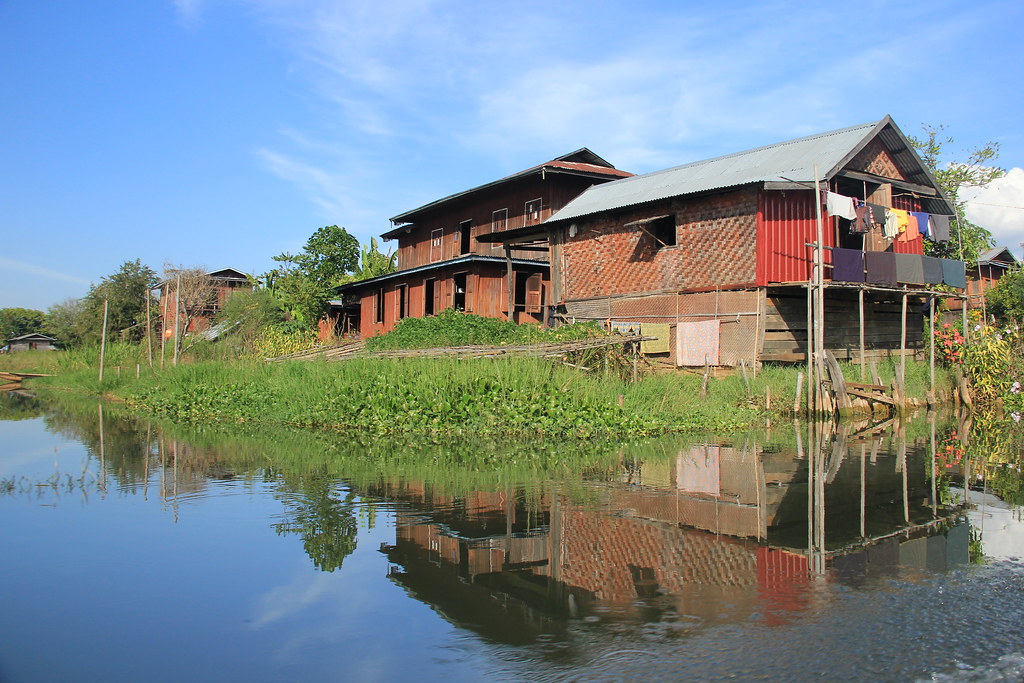
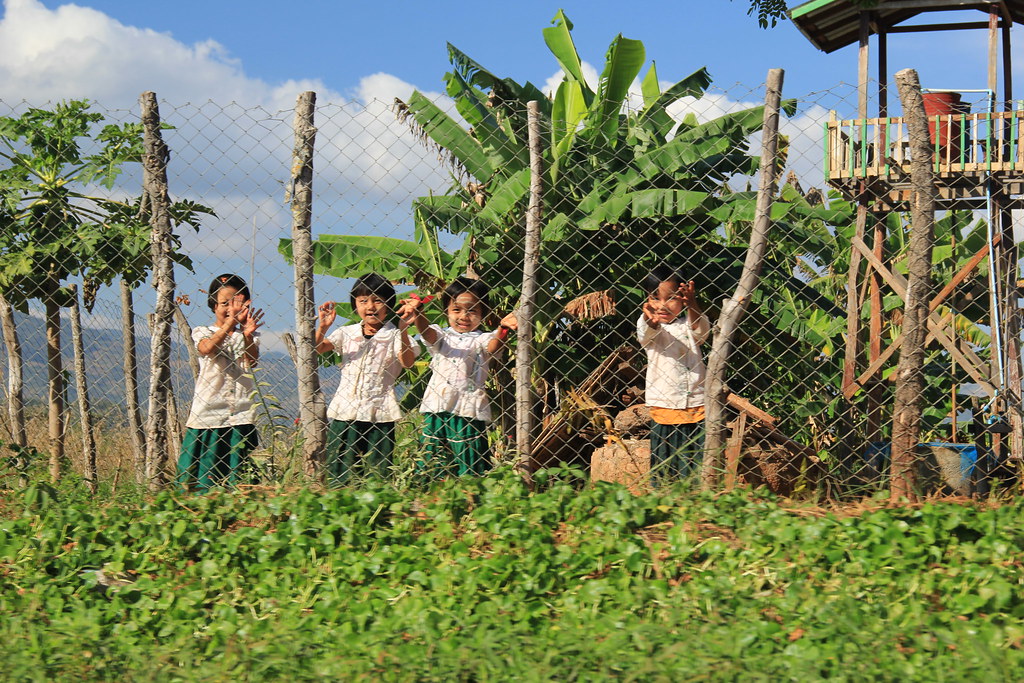
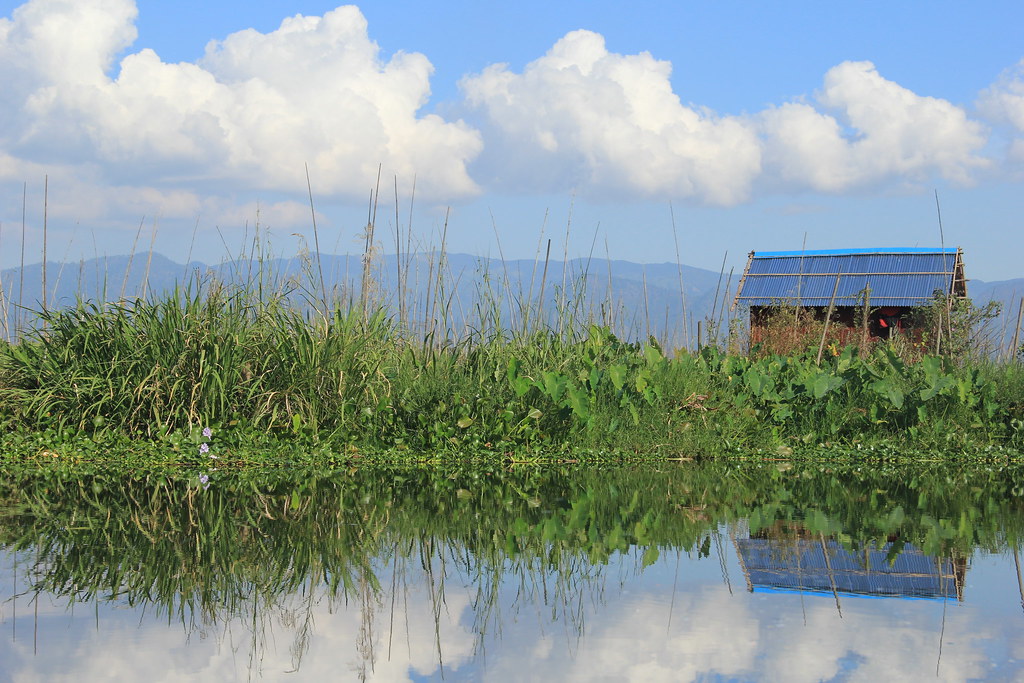
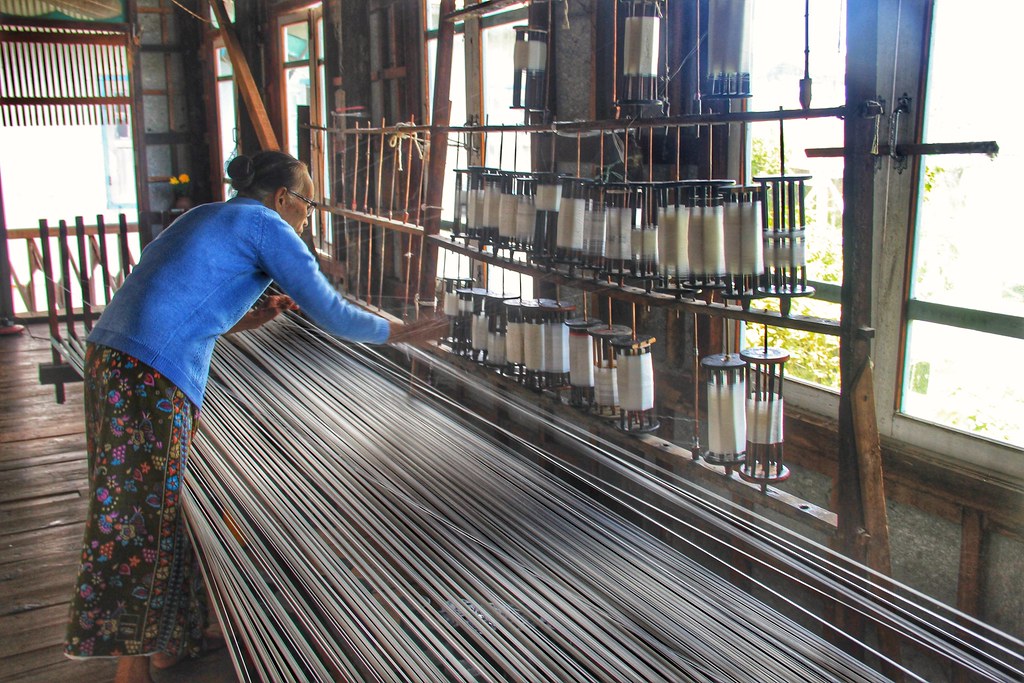






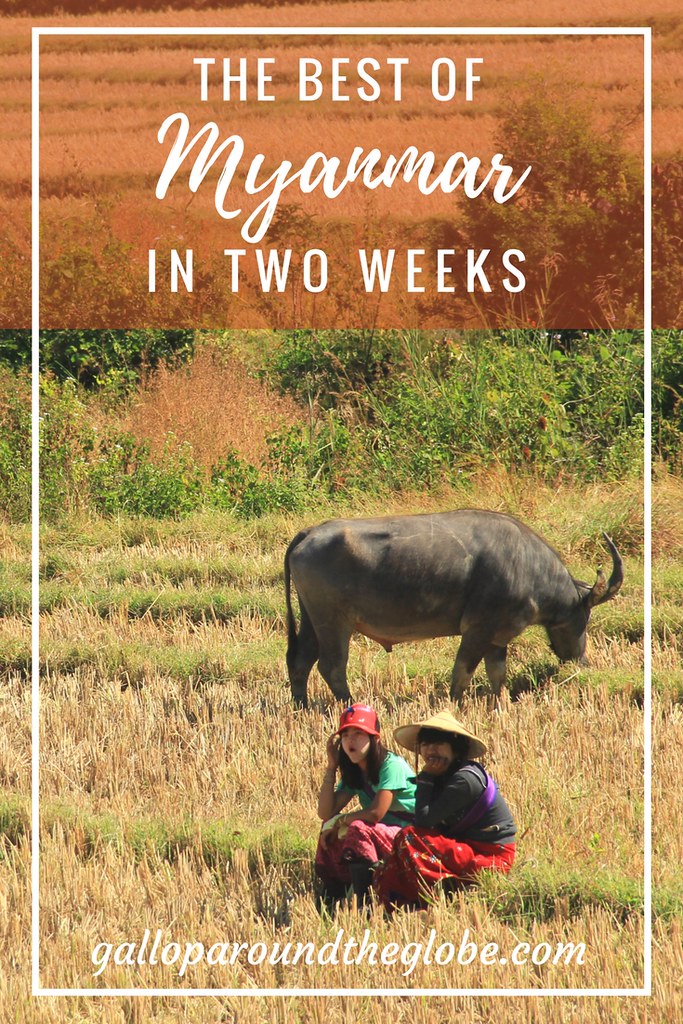






16 Comments
Love this itinerary! I experienced SE Asia, but I have never been in Myanmar. Lovely photos and good read.
Glad you enjoyed it! There’s so many places I still want to experience in Southeast Asia (I haven’t explored any of Indonesia or the Philippines yet), but I’m definitely glad I made it to Myanmar 🙂
Myanmar is on my list! Thank you for this itinerary. Will save it for the future.
It’s the same sort of itinerary that most visitors to Myanmar follow I think, although a lot of people I spoke to hadn’t done the trek, and that was one of the best bits in my opinion 🙂
What a beautiful post about Myanmar, one of my favorite countries. I was there this year in January and I absolutely loved it. Did pretty much the same tour as you did. Unfortunately, I didn’t make the circle train tour in Yangon.
Such an amazing country isn’t it! What were your highlights?
Ahh I definitely didn’t have the time to do the Circle Train in Yangon, and I’m absolutely dying to go now! The photos look incredible and it seems like an amazing peep into local life.
The Circle Train ride was fascinating, but then I love train journeys anyway so that got added to my itinerary as soon as I read about it 🙂
How beautiful! Definitely makes me want to pack up and go!
You absolutely should!
A well-covered trip in two weeks, with really beautiful photos, Kiara! Now I wish I had more time when I was there, would love to go Mandalay + also Kalaw! Flying in to Chiang Mai afterwards is a good idea, it too is another city I hope to go. =)
There’s never enough time is there? We wanted to make it to Mount Popa, the Kakku pagodas, and Hsipaw, and then there’s also all the proper off-the-beaten path destinations south of Yangon. You’ll need a full two weeks just to cover those! Chiang Mai’s a lovely city though, I have a post scheduled about Chiang Mai next Monday 🙂
Looks like you really covered a lot in two weeks! Great photos too. Thanks for sharing.
Haha we did our best! Such a diverse and beautiful country 🙂
What an incredibly detailed, helpful, and fascinating post! I would love to do and experience everything on your suggested itinerary – especially the temples in Bagan. Until I read your post I hadn’t realized how recently tourism has developed into a significantly larger industry in Southeast Asia.
What an amazing country! I am hoping to visit in a year or two, Myanmar has been on my radar for a while 🙂 Loved your photos and tips!